VGA passthrough with Citrix XenServer 6.5
- Citrix
- Citrix XenServer
- 21 May 2016 at 09:19 UTC
-

- 4/5
10. Assign a graphics card to your virtual machine
To begin, stop the desired virtual machine and right-click "Properties" on it.
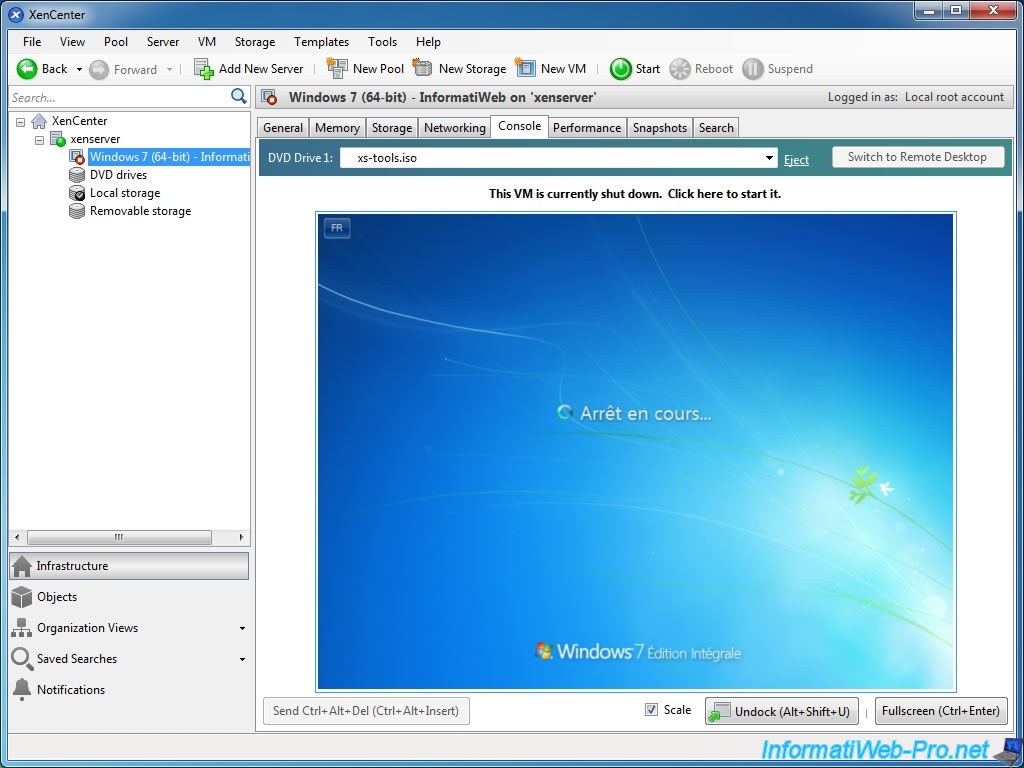
Go to the "GPU" part and select your graphics card from the list.
In our case, the graphics card "NVIDIA Corporation GM107 [GeForce GTX 750 Ti] GPUs". (GM107 is the code of the chip of the graphics card : wikipedia.org)
As indicated by XenCenter :
- before selecting a graphics card in this list, you must make sure you can access your virtual machine over Remote Desktop. No worries because this is the case.
- you must install the appropriate drivers for your graphics card once you have started your virtual machine. That's what we'll do next.
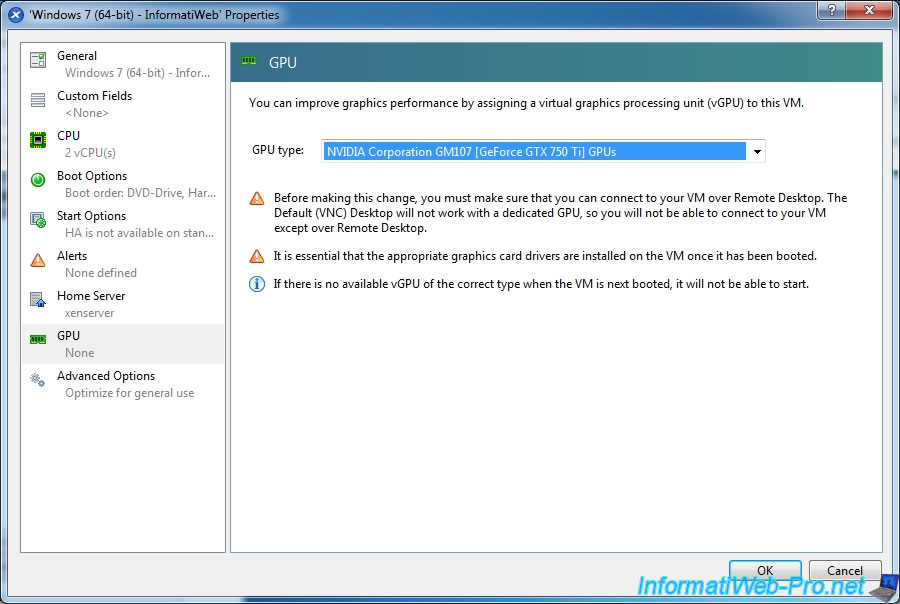
Boot your virtual machine.
If IOMMU or VT-d is enabled, the virtual machine will boot up correctly and the line "This VM has a pass-through GPU assigned. You must connect to it using Remote Dekstop" will appears.
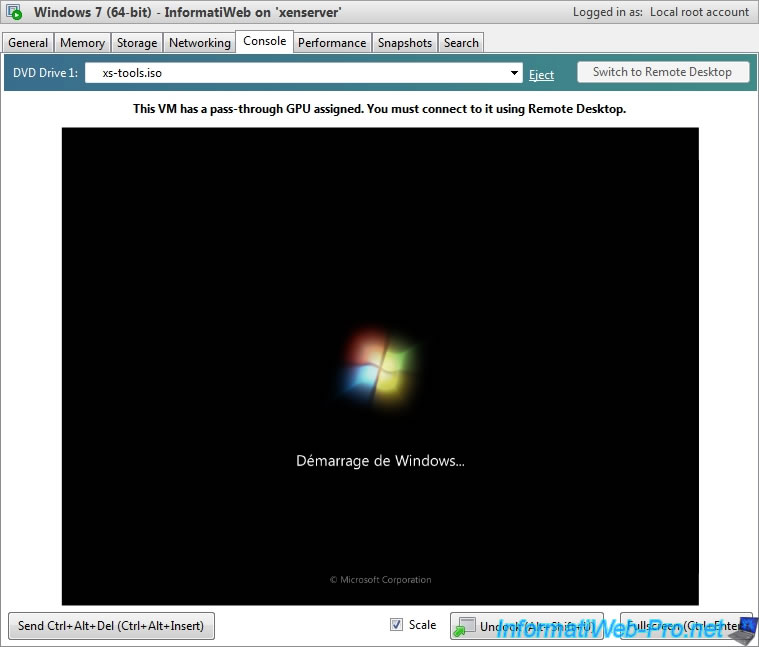
But, if IOMMU or VT-d is not supported by your motherboard or if this technology is not enabled in the BIOS, the virtual machine will not start and will display this error message :
You attempted to run a VM on a host which doesn't have I/O virtualization (IOMMU/VT-d) enable, which is needed by the VM.
Note : To enable this option (if your motherboard allows it), follow this : Enable IOMMU or VT-d in your motherboard BIOS
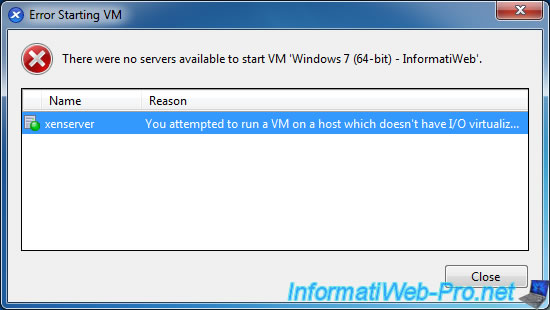
Windows will attempt to install the necessary drivers for your graphics card.
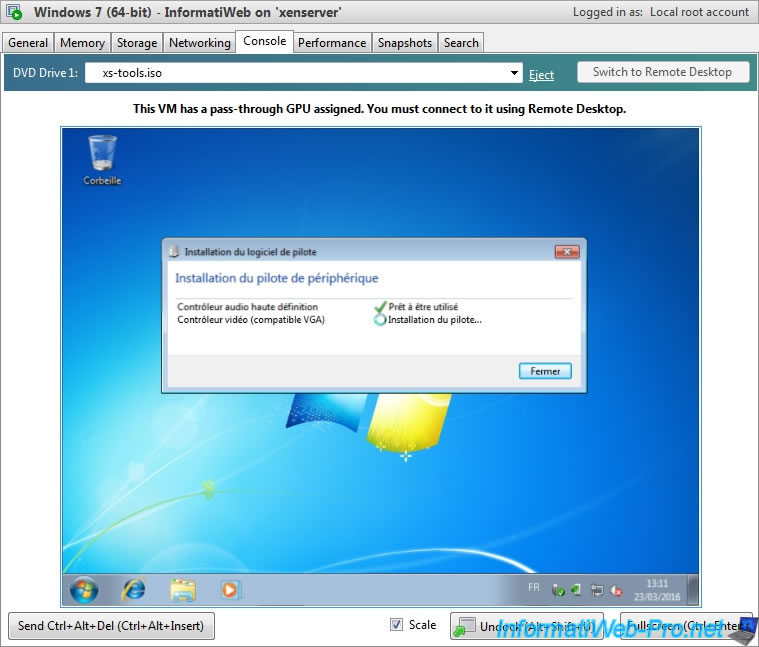
But, it is possible that he does not install them all.
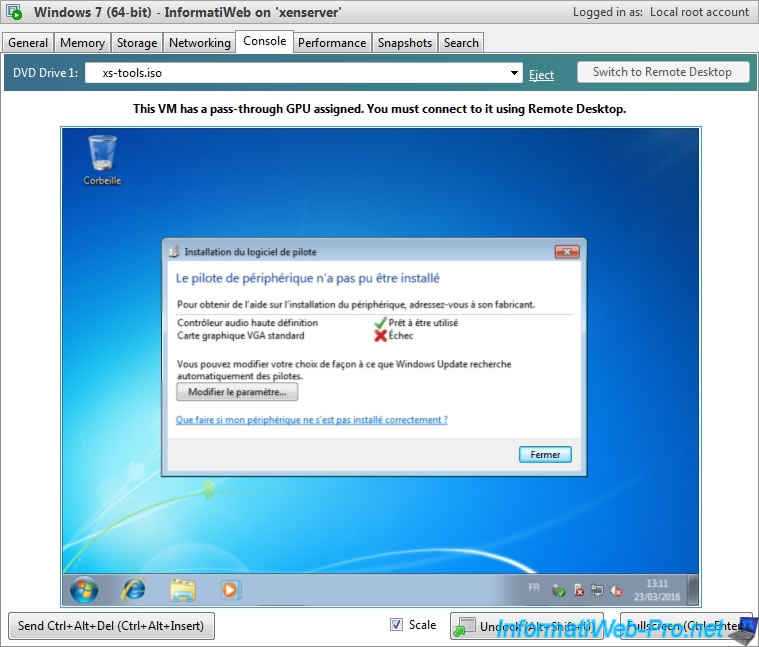
11. NVIDIA graphics driver installation
Before installing the driver of the graphics card, we recommend you to make a snapshot of the virtual machine.
Indeed, some drivers may cause problems when installing it in a virtual machine.
To install the driver of our NVIDIA graphics card, we downloaded the latest driver available from the official website and we tried to install it.
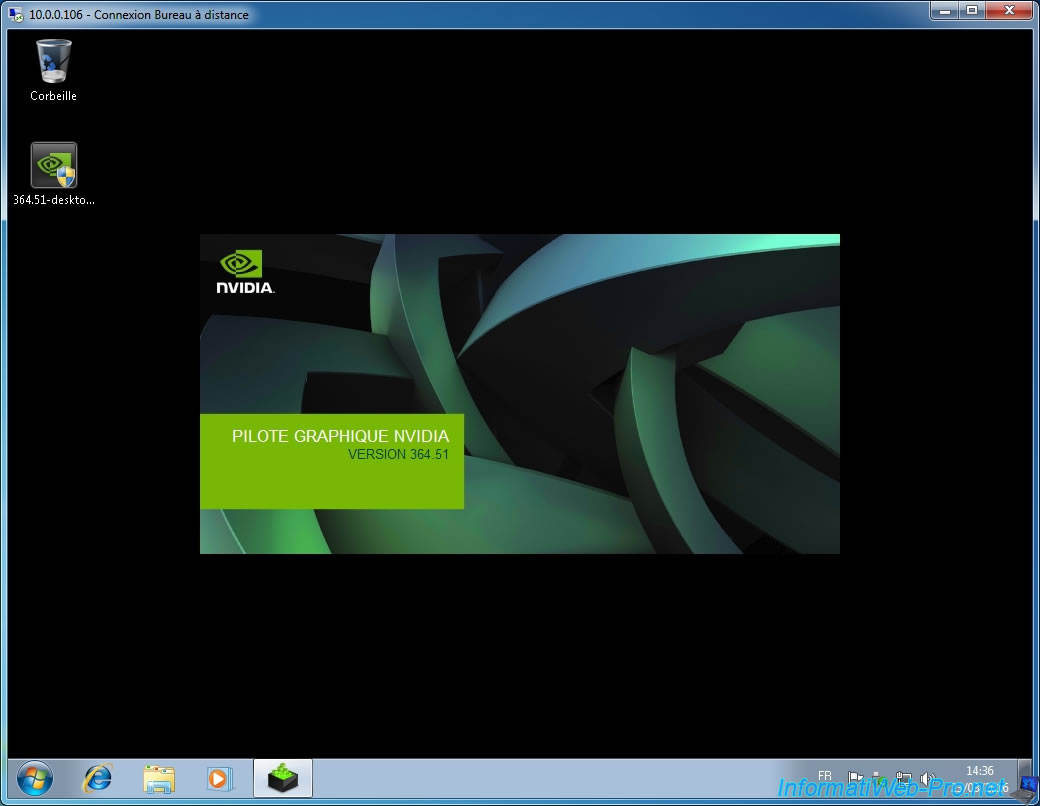
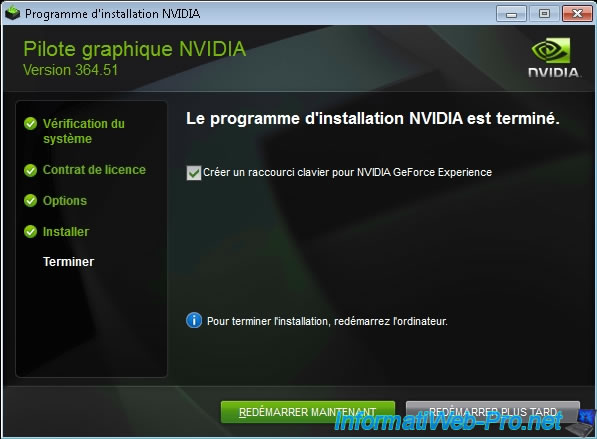
But, this "364.51" version caused us a blue screen "STOP: 0x0000007E".
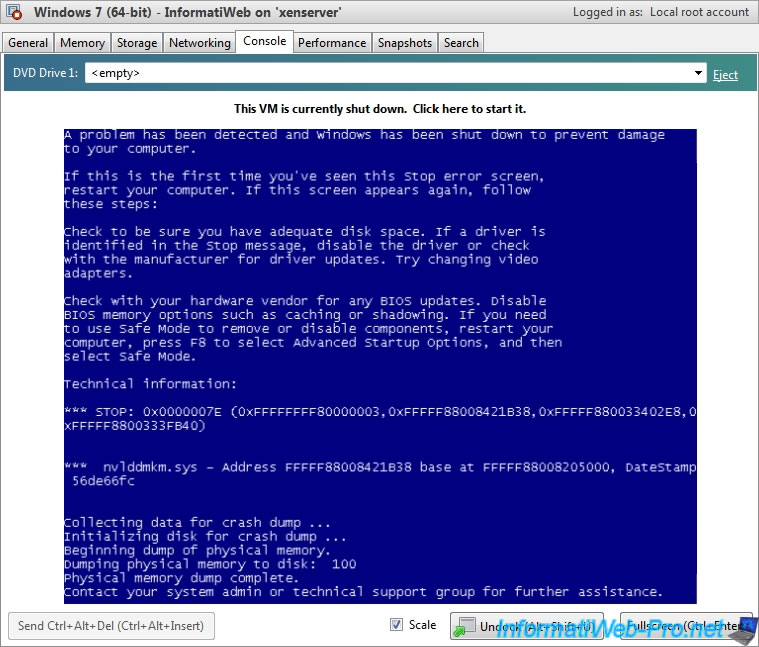
So, we have restored our virtual machine to its previous state (using the snapshot created earlier) and we have downloaded the 361.43 archived drivers version on the NVIDIA official website.
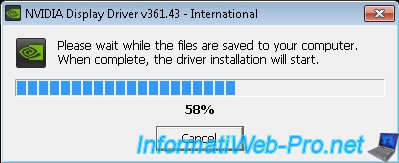

The verification of the compatibility of the system can take a long time depending on the performance of your computer (or server) and the configuration of your virtual machine.
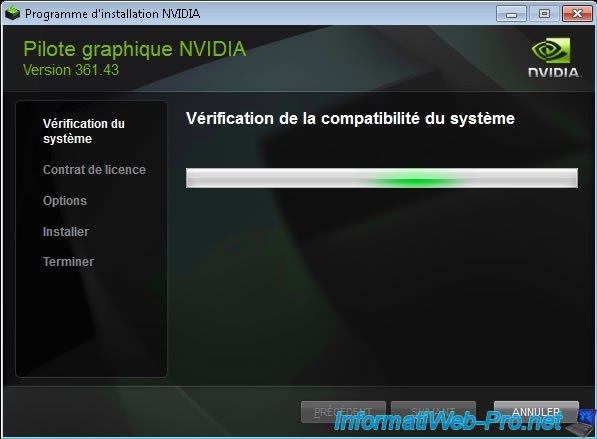
Once the check is complete, accept the license agreement.
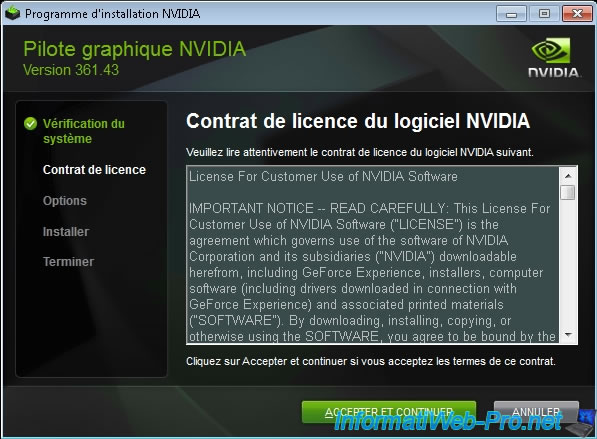
To avoid even getting a blue screen, we have chosen a "Custom (advanced)" installation.
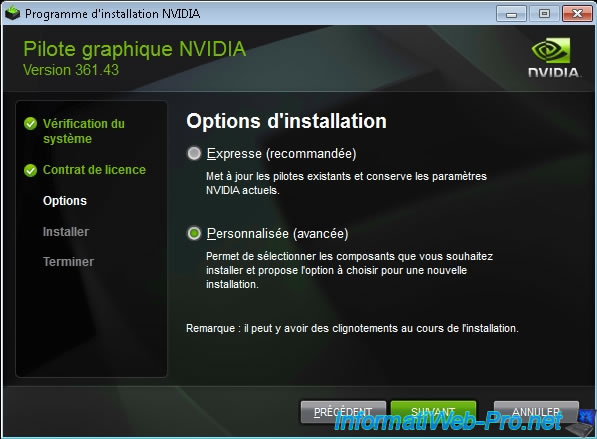
And we have only installed the necessary drivers : Graphics Driver and HD Audio Driver.
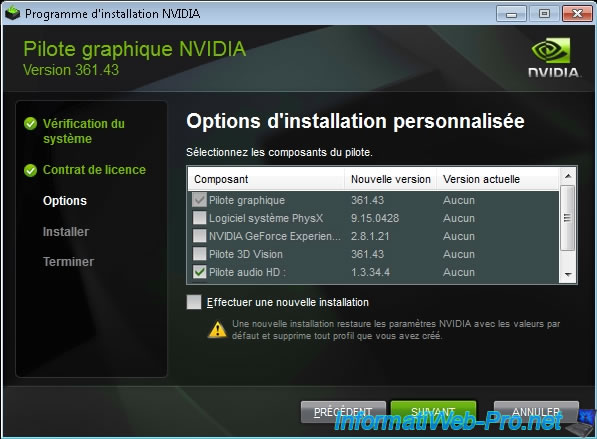
The drivers install without problems.

And the installation completes successfully.
Click "Restart Now".
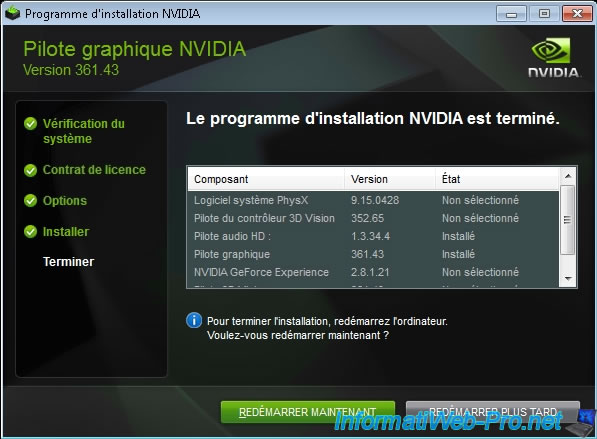
While your virtual machine is powered on, you can see the use of your graphics card by selecting your XenServer server and going to the "GPU" tab.
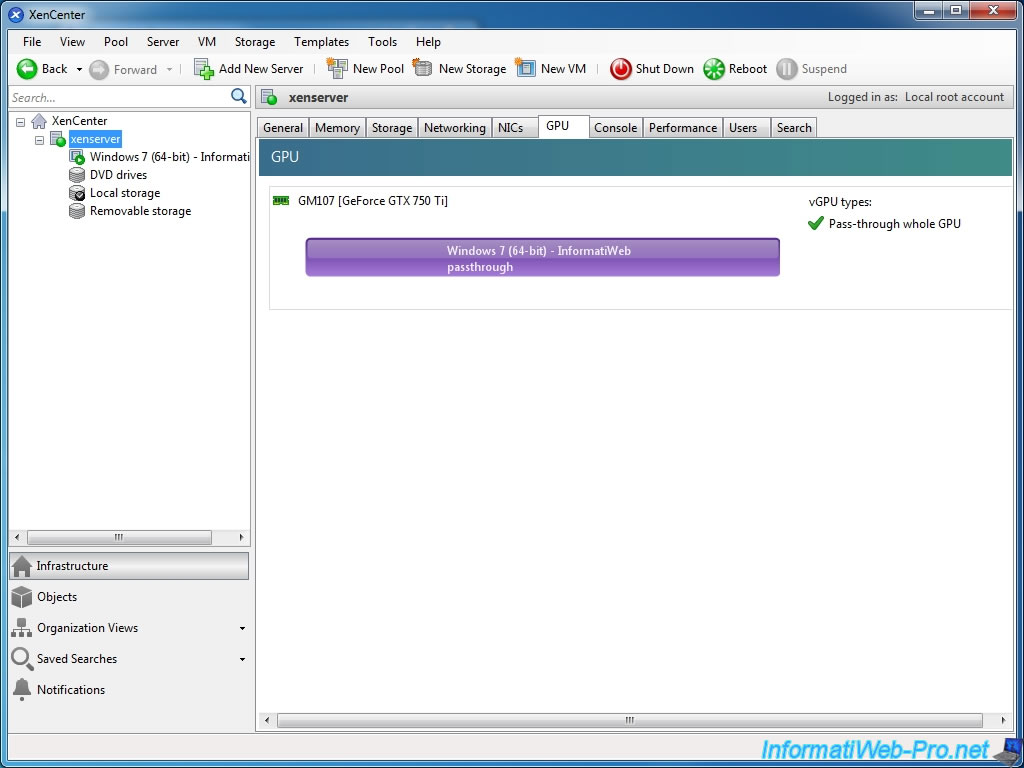
Once the virtual machine has restarted, go to the Device Manager.
As you can see, Windows recognizes the two graphics cards : the Citrix graphics card (VGA standard) and our Nvidia graphics card (NVIDIA GeForce GTX 750 Ti).
Nevertheless, a yellow icon is displayed for our graphics card.
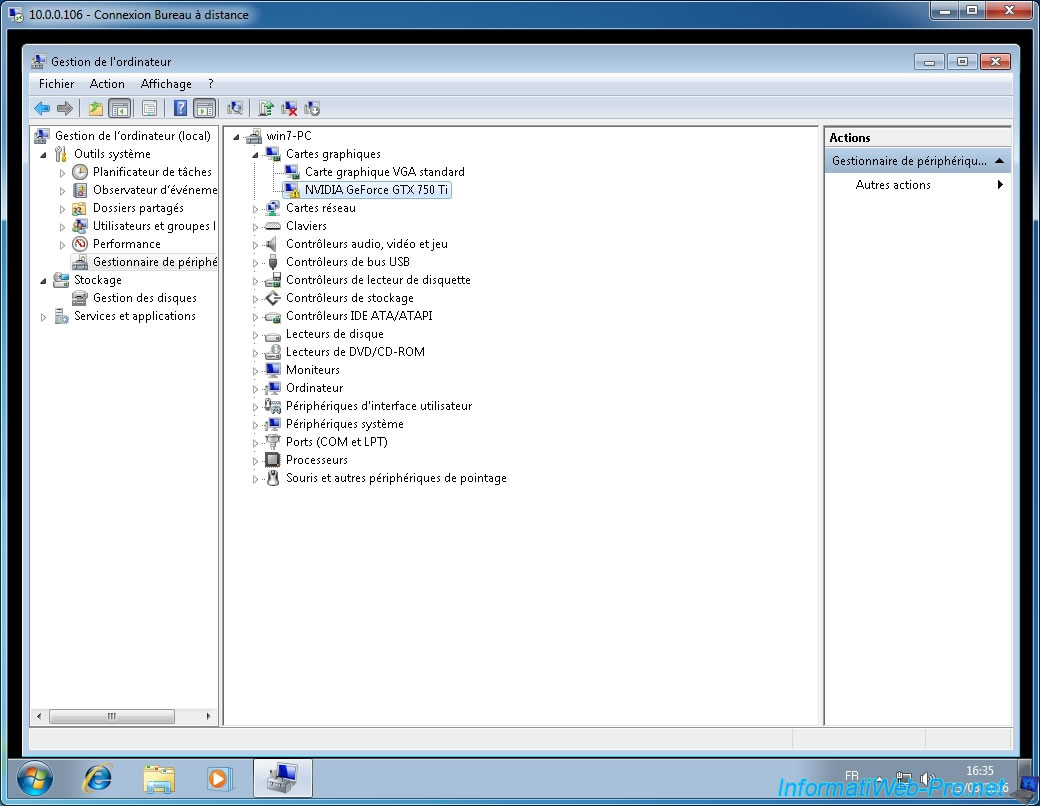
And the error code 43 is displayed for the status of this device. :-(
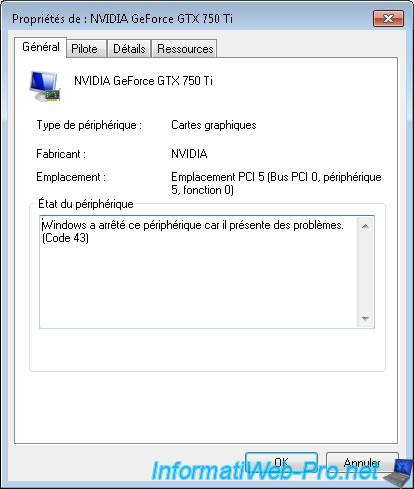
Conclusion :
If you want to use the VGA passthrough, make sure that your hardware is 100% compatible with this technology before you buy it.
If necessary, contact Citrix, NVIDIA, motherboard manufacturers, ... to get the required information.
In addition, as shown in the Xen Wiki, some graphics cards require an extraction of the graphics card BIOS to use it without problems in a virtual machine.
Plain Text
Citation : Some graphics adapters modify their VGA BIOS when the computer starts, so the exact VGA BIOS cannot be read from memory ... In this case you need to use vendor-specific tools to extract the VGA BIOS from the graphics adapter, and load the VGA BIOS from a file to the HVM guest.
Share this tutorial
To see also
-
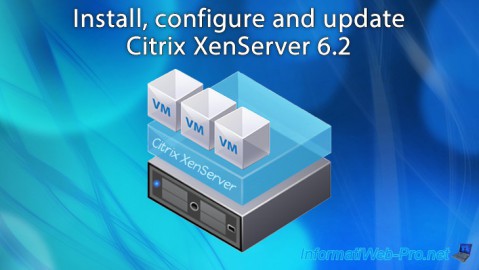
Citrix 12/30/2014
Citrix XenServer 6.2 - Installation, configuration and updates
-
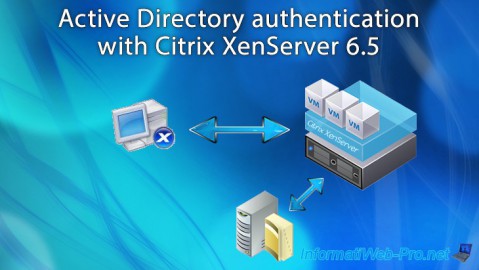
Citrix 6/21/2017
Citrix XenServer 6.5 - Active Directory authentication
-
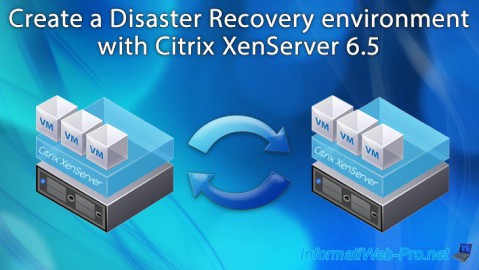
Citrix 5/21/2017
Citrix XenServer 6.5 - Disaster Recovery
-
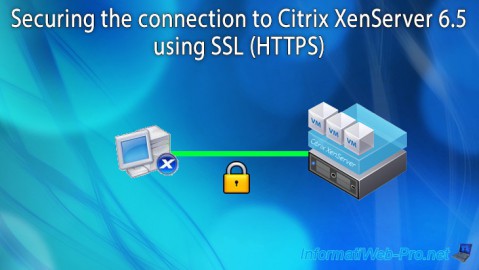
Citrix 4/30/2015
Citrix XenServer 6.5 - Secure the connection using SSL (HTTPS)

No comment